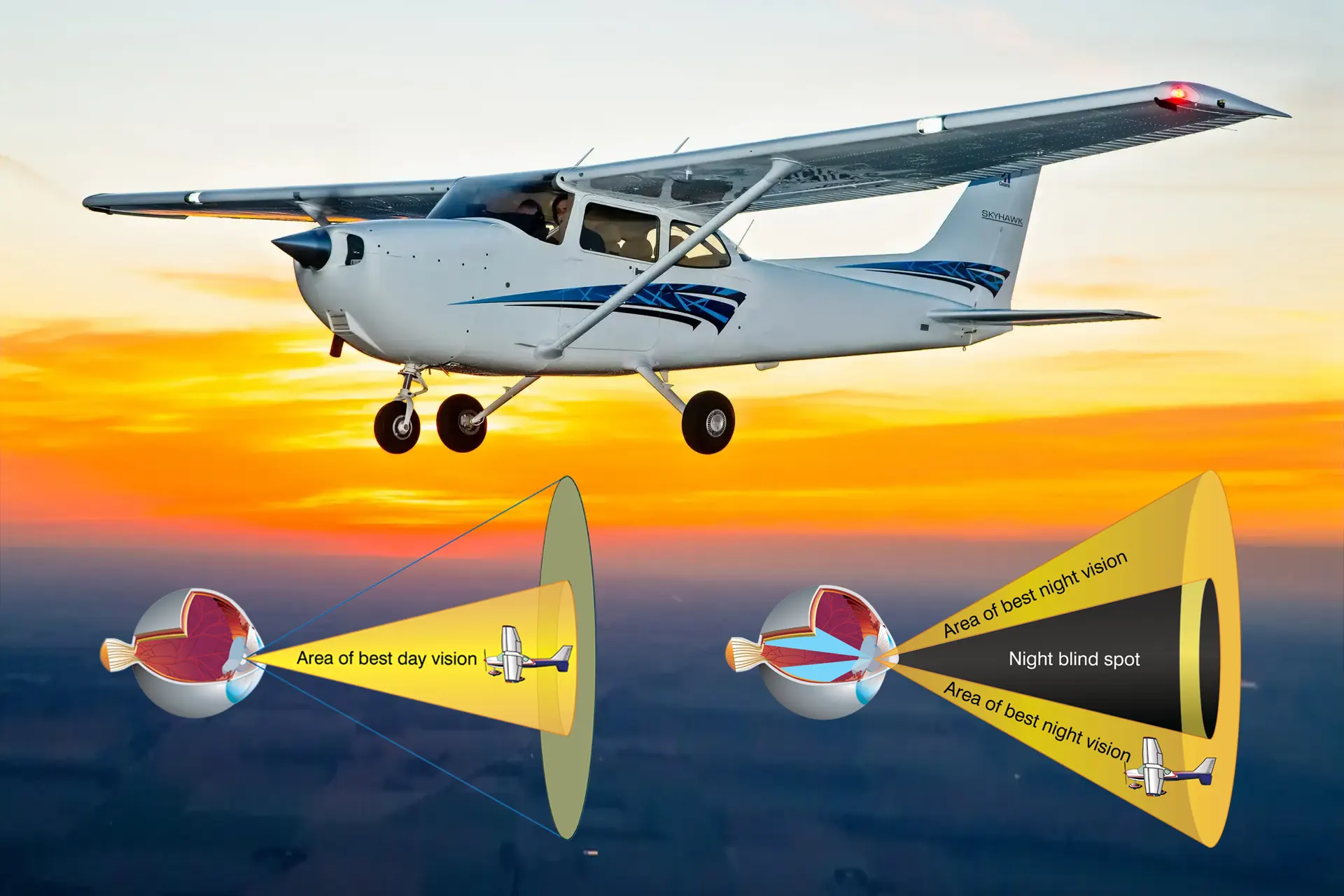
The mechanical operation of an airplane at night is no different than operating the same airplane during the day. The airplane does not know if it is being operated in the dark or bright sunlight. It performs and responds to control inputs by the pilot. The pilot, however, is affected by various aspects of night operations and must take them into consideration during night flight operations. Some are actual physical limitations affecting all pilots while others, such as equipment requirements, procedures, and emergency situations, must also be considered.
According to Title 14 of the Code of Federal Regulations (14 CFR) part 1, Definitions and Abbreviations, night is defined as the time between the end of evening civil twilight and the beginning of morning civil twilight. To explain further, morning civil twilight begins when the geometric center of the sun is 6° below the horizon and ends at sunrise. Evening civil twilight begins at sunset and ends when the geometric center of the sun reaches 6° below the horizon.
For 14 CFR part 61 operations, the term night refers to 1 hour after sunset and ending 1 hour before sunrise as 14 CFR part 61 explains that between those hours no person may act as pilot in command (PIC) of an aircraft carrying passengers unless within the preceding 90 days that person has made at least three takeoffs and three landings to a full stop during that night period.
Night flying operations should not be encouraged or attempted except by certificated pilots with knowledge of and experience in the topics discussed in this site.
